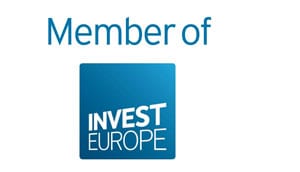How quality of revenue can make or break your business

Not all revenue is good (enough) revenue
This article will be part of a series where we’ll elaborate on concepts that have less coverage on the local VC market. Examples of such concepts are “quality of revenue”, “venture returns”, “vested interests”. We, at EGV, hope this behind-the-scenes look will help founders be better prepared to close their rounds and help investors to better assess their placements.
Many startups – and some investors, as well – consider generating revenue early on as the ultimate proof of product-market fit. What can be a better proof of market fit than having paying customers, right? After all, that startup idea seems to meet most requirements and promises to become successful.
Well, while it may seem smooth in the beginning, it actually depends on the quality of that revenue, especially as startups try to leverage their early income to command higher valuations.
So, what makes up the “quality of revenue”?
For a clearer outlook, let’s think of an example: Let’s take a hypothetical B2B company developing back-office technology for advertising agencies. Let’s call them Mad Men Ltd.
Mad Men Ltd launched just 9 months ago and they’ve already signed 3 clients, generating close to €300,000 in annualized revenue. If everything goes according to plan, the company will be breaking even in just 6 months.
They also plan to raise a Series A with some major VC funds in the US and Europe this summer. A very appealing company to invest in, wouldn’t you say?
But is it actually so? Let’s take a better look at their “quality of revenue”:
1. Consistency
As in the consistency of revenue sources. Start by asking yourself a few straightforward questions, that might help determine how consistent your revenue sources are:
- Are you selling to the right customers for the right price?
- Are you at least selling to customers with similar profiles at a reasonably consistent price point?
Let’s refer back to our example, Mad Men Ltd. Supposedly, they are making their first money by selling to one media buying agency in Nigeria, one full-service advertising network in Canada and one PR agency in Romania working only for the public sector.
They’re charging a different price for each client from different continents (the geographical spread proves a lack of focus in their marketing efforts, by the way).
They are even using different business models: charging the media buying agency in Africa a fee for every transaction versus charging the advertising network in North America an annual licensing fee.
Mad Men Ltd may intend to raise their Series A this summer, but any sane investor would see a problem in the consistency of their revenue.
2. Concentration
- How much of your revenue is coming from just one client?
- Is your revenue distributed among many accounts or concentrated with just a few?
Basically, you need to take into consideration your revenue resources and make sure they are fairly spread between your accounts. Having a bigger concentration just from one resource presents a great risk on the long-term.
Once again, let’s discuss the case of Mad Men Ltd: theoretically, they’re making 97% of their revenue from the network in Canada, 2.9% from their media client in Nigeria and only 0.1% from the PR company in Romania. This is just another red flag that will make their Series A difficult to raise this summer.
3. Recurrence
- What’s the frequency of your revenue generation?
- Is it repeatable and predictable? Or does there seem to be no order?
Remember that Mad Men Ltd is still exploring different business models with their clients: conducting transaction fees in Nigeria versus licensing the technology in Canada. Which means that some of their revenue is being generated on a daily (or even hourly) basis while the other amounts are annual.
Also, Mad Men Ltd doesn’t have enough data points to calculate their Customer Lifetime Value (CLV). They seem to actually have no idea of how much money they’ll be able to generate – neither from existing clients nor from new business – in the next cycle.
This degree of uncertainty is never taken lightly by a later-stage investor. This is exactly why knowing your revenue recurrence value is something to take into account whenever you want to evaluate your business.
4. Churn
This can be a tough one to evaluate, but the easiest question you can ask yourself is: how much revenue are you failing to re-capture?
Yes, Mad Men Ltd is indeed generating revenue. Which, at first glance, means that they must be doing something right – creating value for their paying clients, right? But is this enough to command a high valuation for their Series A? The answer also depends on their ability to retain clients.
But Mad Men Ltd is too young a company to prove these capabilities – they have yet to close a first cycle (a first year of invoicing) in order to confirm that the banks they work with are not a one-time kind of a client.
5. The actual profitability of revenue
This point is quite straightforward:
- Are you making any profit on the revenue you generate?
- In other words, is the process of generating revenue more expensive than the revenue you generate?
Remember to factor in the marketing costs (inbound vs outbound), the level of customer service required for generating revenue (light touch versus hands-on), the sales channels you use (direct, indirect, self-service, partners etc).
Let’s take one final look at Mad Men Ltd. Their business estimates that they will reach break-even in just a few months, but for the moment they are still losing money. Why?
- They’re over-servicing their existing clients, trying to learn as much as possible about their needs.
- They’re still exploring different channels looking to optimize the marketing and sales engine.
- Overall, they’re spending too much to generate too little money.
Which is exactly what they need to do at this stage of development. But it is also what will make their Series A round difficult to close at a high valuation.
On a closing note — if you are leading an early-stage company preparing to raise its Series A based on the revenue it already generates, ask yourself the questions above and try to assess what the quality of your revenue is.
You should also make sure you have all your documents ready and that you know the pros and cons of signing investment term sheet clauses.
Going unprepared to a fundraising meeting with a VC, especially with the “big boys”, is something that only Mad Men (Ltd) would do (pun intended).
So you think your startup idea will provide very good quality revenue? Tell us more.






